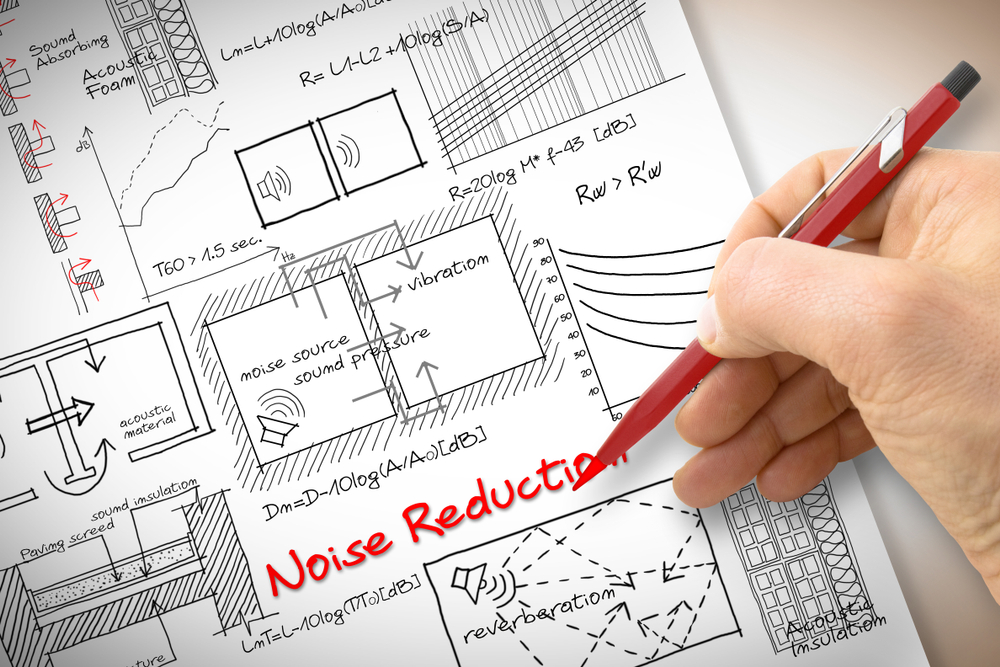Vibration isolation and sound insulation SIA Norm 181 and DIN 4109
Noise is one of the most common forms of environmental pollution today. Noise can be quite annoying - not only at night when you want to sleep. Noise causes stress, especially in your own four walls and noise can even make you ill. Everyone who has ever suffered from poor sound insulation or inadequate vibration insulation knows this.
?
Therefore, protection against noise or noise emissions is an increasingly important issue. Especially in old buildings it is sometimes quite noisy, because due to the building fabric and the construction methods used in the past, the sound insulation is often inadequate. But also the density of the buildings plays an important role. The closer buildings are to each other, the higher are the requirements for sound insulation or vibration insulation.
However, sound insulation and vibration insulation not only protect people, but also machines and buildings. It may be necessary to set up machines in a vibration-isolated manner to prevent damage. Vibration insulation of building services equipment or of facing panels almost completely prevents their vibration movement.
The reduction of vibration and structure-borne sound transmission is taken into account in almost all areas of technology. It has therefore been proven that vibration insulation eliminates disturbing machine or environmental vibrations, thus increasing precision and work quality in companies.

SIA Standard 181 - Sound insulation in building construction
The most important innovations in building services installations
The SIA standard 181 "Noise protection in building construction", which dates from 1988, was revised and came into force in June 2006. requirements. This includes the following levels of requirements:
Minimum requirements: The minimum requirements guarantee a level of sound insulation that can only prevent significant disturbances.
Increased requirements: The increased requirements provide sound insulation that makes a large part of the people in the building feel comfortable. The increased requirements apply to semi-detached and terraced single-family houses as well as to newly built condominiums.
Special requirements: In the case of special uses or special sound insulation requirements (also for individual rooms or noise types), special requirements must be defined and agreed. Special conditions are given in particular if the noise sensitivity and/or the degree of emission-side noise pollution deviates considerably upwards or downwards from the descriptions given.
The scope of application is described in detail in the SIA 181 standard, which is divided into the following four noise type subject groups:
- Airborne sound
- Impact sound
- Structure-borne sound
- Noise from building services installations and fixed noise sensitivity in the room to be protected
?
The noise protection goals of SIA 181 :
- the minimum requirements are to be observed and guarantee the user sufficient noise protection
- the assured sound insulation must be declared in a contractual and comprehensible manner
- The building experts must provide the following preventive information
- and information against external and internal noise sources or against structure-borne sound radiating from external and internal noise sources.
?
DIN 4109 - Sound insulation in building construction
In Germany, DIN 4109 "Sound insulation in buildings" applies to sound insulation in buildings. This includes further standards/guidelines/recommendations which provide characteristic values for sound insulation in buildings:
Supplement 2 to DIN 4109 "Sound insulation in buildings - Proposals for increased sound insulation".
VDI Guideline 4100 "Noise insulation in buildings - Dwellings - Assessment and proposals for increased noise insulation".
DEGA (German Society for Acoustics)-Recommendation 103 "Noise protection in residential buildings - Noise protection certificate
?
The legally prescribed minimum sound insulation according to DIN 4109 and SIA 181 is binding in any case. This specification is binding and everyone must comply with it.
?
The basic principle of vibration isolation is to separate the interfering object (active isolation) or the object to be protected (passive isolation) from each other and to expand isolation materials or rubber satellite elements or springs into a system capable of vibration by means of an intermediate layer. The principle of vibration suppression consists in the fact that by frequency tuning from the excitation frequency to the natural frequency, the movements are no longer synchronous with the interference, but are in opposite phase to it?
The need for rest and relaxation is becoming more and more important, and inadequate sound insulation considerably reduces the comfort and value of living. Anyone with a need in this area should consult an expert in acoustics and sound insulation. They will work out individual solutions to problems after a thorough analysis.
The expert will give you detailed advice on sound insulation in the building as well as on protection against outside noise. Detailed information on the subject of sound insulation for walls, windows and doors will help you to tackle the issue effectively. The professionals offer effective solutions for all buildings and rooms. Often it is even possible to achieve a high level of sound insulation without much effort and you will have the necessary peace and quiet in the long run.
The versatile products of Vibraplast AG in the field of noise control or vibration insulation can contribute to a "soothing future" within your four walls.

